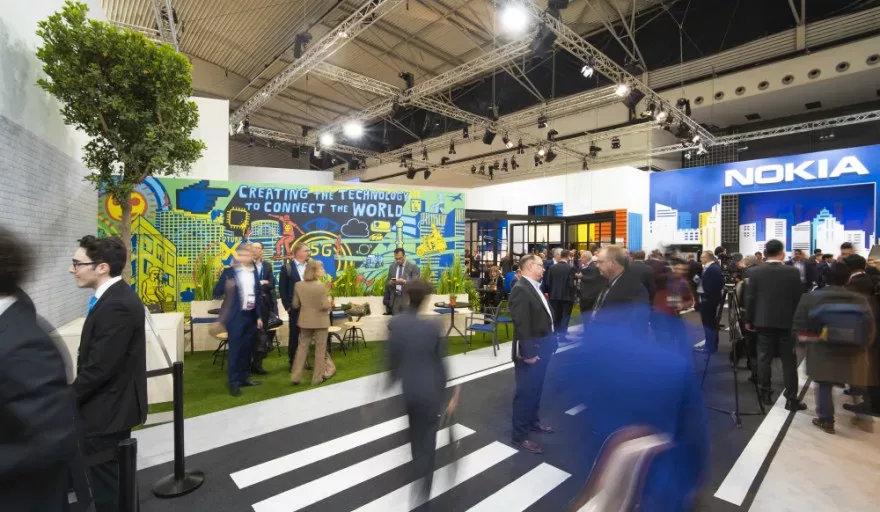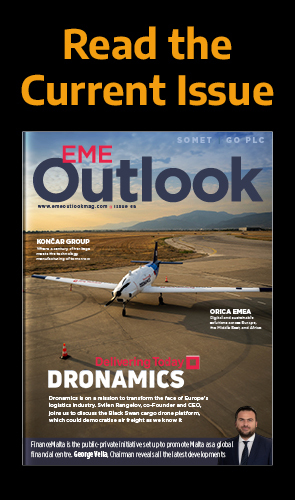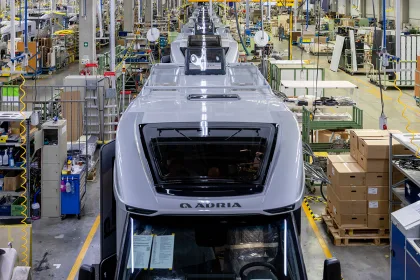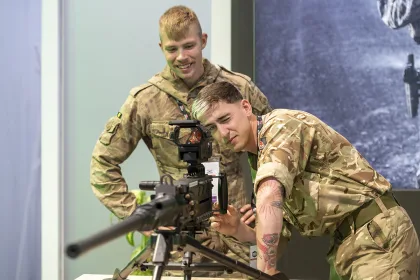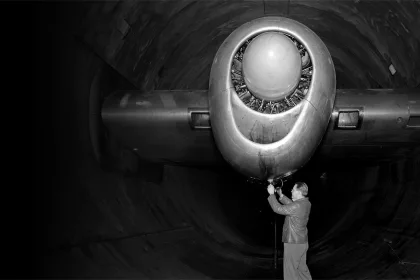“I guess I’m addicted to the next thing, the seemingly impossible.” Not only working as the Director of Enterprise Marketing at global telecommunications company Nokia but also residing in Silicon Valley, Houman Modarres’s passion for technology was as prevalent as expected when we met at MWC.
“Myself?” he said, taking a seat in a backroom at the company’s 1,500 square metre booth. “I’m involved in helping enterprises, allowing them to become better connected across different industry segments.
“Industry is going through a big change. Sensors, machines, devices – these things are all providing substantiated capabilities, providing greater insight that can then be turned into actions for the benefit of businesses, more quickly and efficiently than ever before.
“We’ve successfully connected people; now how do we connect machines? Nokia’s making a concerted effort to answer this.”
Having cemented the role of integrator and enabler when it comes to enterprise transformation, Nokia has continued to expand its remit, now covering a wide, diverse array of different categories.
Leveraging the effective dynamic between its own expertise and those of its clients, the telecommunications company readily calls upon inter-industry commonalities, striking an effective balance that complement its ever-growing service portfolio.
“It’s like people, right? Once you get to know someone you often realise that you have a lot more in common than you first thought,” Modarres explains.
“There are constituent technologies, and at the end of the day we’re merely advisors to our customers. They know more about their business than we possibly could, and we know more about the technologies than they could care to.
“However, what works for us is that technologies remain consistent – it’s the applications that vary, and while contexts may differ, there’s often more similarities than differences.”
PROGRESS IN PRACTICE
A natural progression of topics, the conversation quickly begs the question – what are these applications?
“I could ramble on about this forever, but I’ll try not to,” Modarres muses, leaning forwards in his chair.
“We’ve been doing a whole host of things with dedicated wireless networking and 5G and by doing so we’ve been involved in a lot of exciting developments.
“In the context of healthcare, for example, we’re facilitating the emergence of teleradiology devices that practitioners can carry anywhere, providing them with complete and confidential patient information. This has huge implications for global medicine whereby doctors are provided with access to services in even the most remote corners of the world.”
Opening the January issue of EME Outlook magazine and turning to our Guinness Six Nations 2019 preview, he continues: “This reminds me of our work with SciSports.”
A company working with football clubs across Europe, the firm has fitted approximately a dozen stadiums with 4K cameras that are able to consistently monitor and stream the motions of every player, the referee and the ball during every match.
Connected to a rural cloud network provided by Nokia, this is then run on an analytics platform, transforming the use of data for clubs across the continent.
“I have to admit as a fan of the sport I’m torn,” Modarres adds. “There are questions about whether this dampens the theatre and drama of soccer, but equally the technology is revolutionary for the game.
“Taking this, managers can vastly improve their methods, tailoring training sessions and more, while owners can equally call upon this to rate their players when new contract negotiations come up.”
The glitz and glamour of technology in sport aside, the enterprise marketing expert moves on to talk about its uses in mining, another industry that is currently the subject of a digitised overhaul.
“In the context of countries that are rich in natural resources, autonomous vehicles and robotics are a really interesting development,” he continues. “If something goes wrong for a robot, someone’s parent still gets to go home. No longer is there a reason to risk people’s lives.”
A CULTURAL SHIFT
It’s been estimated that the global industrial automation market will reach a total value of $321.9 billion by 2024, growing at roughly 6.6 percent each year for the next half decade.
A high-potential space that’s clearly on the rise, autonomous technologies offer a wide range of applications to prospective industries.
Modarres reveals: “At Nokia we’re going one step deeper, looking at how we might work with automotive manufacturers to build factories of the future by leveraging 5G.
“Not only are manufacturers implementing wireless connectivity to the benefit of end-users, but also in changing the way they construct their vehicles. Looking at complex processes, it can take weeks, sometimes months to alter line configurations.
“But what if this could be done to order at scale? It’s becoming quite possible, and many have the vision of making factories without wires, using new low-latency edge cloud and 5G technologies.”
Undoubtedly, however, despite the extensive benefits that autonomous technologies will increasingly provide throughout 2019 and beyond, accelerating industrial efficiencies, there are numerous challenges to overcome.
“For a long time, my dad would never take money from an ATM machine, and for even longer he would not put a cheque into a machine. He wanted to hand it to a person,” Modarres continues.
“That wasn’t a problem with technology. It was a problem with my dad.”
Calling on his own experience from this example, Modarres concludes: “It’s the classic kid on a tricycle complex – until you can experience something and react to it, people won’t trust it. It will be adopted in segments and monitored very closely, most likely in major industrial complexes such as mines or manufacturing plants.
“I don’t think it’s the technology as much as our comfort with certain technologies that needs to change.”



